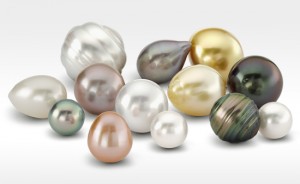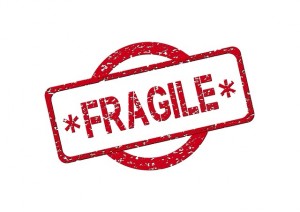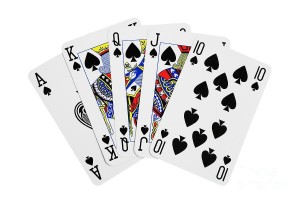Sending Mail
PREPARING A POSTCARD
 The shown example is the recommended way to prepare a postcard, complete with dimensions and “no print” zones.
The shown example is the recommended way to prepare a postcard, complete with dimensions and “no print” zones.
The recipient’s address should be as shown; bolder than the message or other decorations, and should formatted as shown. By keeping to these dimensions, it makes it easier for use to process your postcards and still have them look beautiful.
All post cards should have a full return address in the upper left hand corner and be straight edged and uniformly shaped to be sent out through Mail Services. Although the Post Office will process “fun” shapes, they are not recommended as run a high risk of being damaged.
PREPARING A LETTER
Letter size envelopes should be no more than 6.125″ by 11.5″ and be no more than a quarter of an inch thick. First-class letters that have one or more non-machinable characteristics will pay a non-machinable surcharge (similar to “handling”). Some of these characteristics include:
-
The envelope not being made of paper
-
The envelope is not to aspect ratio of between 1.3 and 2.5. Letters that are within the dimensions given above but not within aspect ratio are considered non-machinable (so, all letters should be landscape rather than portrait oriented)
-
Envelope contains something rigid such as a key, credit card, cardboard (if the envelope cannot be bent at a 90 degree angle without damaging its contents, then it will incur a surcharge)
Size #10 business envelopes can be automatically sealed by Mail Services, but some other envelope styles cannot be sealed automatically. It is recommended that envelopes with a “V” flap be sealed before sending it to us for processing.
PREPARING A BOX
It’s common practice to ship boxes because of the added protection they offer, but they require different handling than letters or postcards. When sending boxes, it’s important to remember:
-
Do not use athletic, duct or masking tape to seal boxes. Couriers might accept them this way, but all of these types of tape tend to un-stick when they are exposed to extreme heat or cold and can compromise the integrity of your shipment.
-
Try to pack the box so weight is distributed evenly. This makes it easier to carry, and prevents accidental drops.
-
When shipping something compact and heavy (lead weight, 20lbs of paperclips, nuts and bolts, etc…) please label it as heavy. We in Mail Services call these “deceptively light” packages because they’re small enough that at first sight you assume that they will weigh less.
-
Don’t skimp on the tape!!! if you’re mailing something large and heavy, now is not the time to get all stingy with the tape! Seal it up good so your shipment is nice and secure.
Mail Services has courier boxes for USPS, UPS and FedEx and recycles cardboard boxes, packing peanuts and bubble wrap for shipping purposes whenever we come across them. We do not purchase shipping supplies, but can help out by re-using existing product.
PREPARING A FRAGILE/VALUABLE SHIPMENT
When preparing a shipment that is fragile or valuable, precautions should always be taken for worst-case scenarios. All couriers do their best to be careful and considerate of shipments in their care, but unfortunately there are accidents, people trip and things happen. When sending these shipments, the following suggestions can help prevent breakage:
- Pack your shipment appropriately: Use sturdy, size appropriate packaging. If you’re shipping grandma’s glass giraffe figurine across the United States and you jam it in a padded envelope, don’t be shocked if it ends up as shards.

- Label your shipment as “Fragile”, even if you’re not sure. No one is going to care if it’s plastic rather than glass… they don’t want to break your stuff anymore than you want it broken.
- Don’t skimp on the padding! Rule of thumb: Pack your shipment so that you can hold it out at waist height and drop it on the floor without fearing it will break. Most shipping accidents that result in damaged product occur when something falls from about that height.
- Another good axiom to remember, is that the longer something takes to ship, or the further it travels, the higher the possibility is that your shipment will break. so use a faster rate! For example, if I’m sending a shipment from here to Texas and sending it the cheapest, slowest way possible, it’s going to take four days and switch trucks 10 – 12 times before it is delivered. It would be less likely to break if I were to send it quickly because it changes hands less frequently.
- If it’s really worth that much, put some insurance on it. All couriers offer insurance up to a certain amount, just ask before sending it.
Shipping valuable or breakable items can be very expensive, but in this case you’ll get what you pay for.
PREPARING AN INTERNATIONAL SHIPMENT
International letters are shipments that can be contained inside an envelope, contains only communication and require no additional handling and start at $1.20 in postage. These letters should be separated from all domestic mail for the required additional postage. International letters not separated might not be seen by Mail Services employees while processing and could be delayed due to insufficient postage, and the country should be clearly visible (the post office prefers in all capitals).
It is also very thoughtful to write “INTERNATIONAL FIRST CLASS” on the envelope. It helps it stand out from the others easier.
PREPARING AN INTERNATIONAL SHIPMENT OF VALUE (>$400)
Ugh. These really are the worst. And by the worst, I mean the most complicated.
Normally, I suggest that boxes be packed, taped up and labeled before being brought to Mail Services, but in this case it’s better to bring all of the pieces of the shipment, but not close it up. A detailed list needs to be made of the contents of the box as well as individual weights and worth of each individual piece for international customs. Why, you say? Well, some countries charge customs tax on incoming products on certain categories of goods. Some of the stranger ones:
- France restricts the import of imitation pearls and any articles of jewelry made with pearls of this type as well as feeding bottles (<–what?!? Click here to see the original link)
- Germany restricts playing cards, except those in complete decks and melatonin (original link)

- Italy… well, their list is pretty incredible. And it’s not just the Vatican City, it’s the whole country! Among some of the most unexpected are “toys not made wholly of wood”, “ribbons for typewriters”, and “Coral mounted in any way” (does that mean that non-mounted coral is acceptable? Original link here)

Because of these little idiosyncrasies and my failure to commit them all to memory, it is wise to run the contents of an international package past me before sending it out to save yourself delays and grief.






